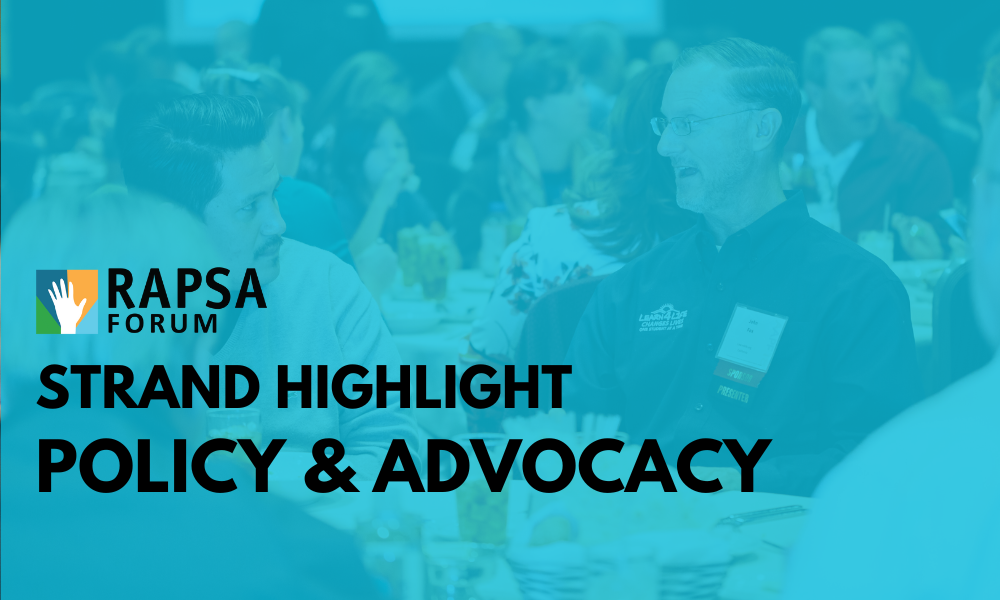
We are pleased to report the theme of the RAPSA 2024 conference, Bridging Futures: Fostering Equity Through Innovation and Empowerment. The conference is seeking presenters that are eager to share their knowledge and experience in improving the lives of At-Promise students. Schools all over California are actively working to create change and make progress towards an improved system of education for students, regardless of their background. The conference has identified five strands that are actively being used and are as follows:
-
Alternative Accountability
-
Policy and Advocacy
-
Leadership for Change
-
Transformative Practices
-
Equitable Access to Workforce Development
This article will go more in depth on the practice of Policy and Advocacy and the efforts being made to further progress this strand. The goals of this strand are to develop a better understanding of state, local, and federal education policies that have an effect on schools and the At-Promise students they are serving. Schools have taken this idea and developed their own practices to help better serve this community of students and ensure they are met with the same access to college and career readiness opportunities.
Educators, policy makers and advocates have been diligently working to bring forth equitable practices that meet the needs of all students for quite some time now. One of the ways these goals are being met is through removing the negative stigmas surrounding students that have previously been referred to as at-risk. This term is typically used to describe students that are struggling academically or come from underprivileged backgrounds. This term at-risk insinuates that the likely outcome of their academic career is one that results in failure. It has a negative connotation and impact on the students. In order to remove the negative stigma and increase a more positive outcome individuals have made the decision to switch the verbage to At-Promise. As of July 1, 2020 these efforts were put into practice. Assembly Bill 413 (Jones-Sawyer, D-Los Angeles) removes the term “at-risk” and replaces it with “at-promise.” (Bill Text - AB-413 Education: At-promise Youth., n.d.)
Another effort to achieve these goals are being met through Alternative Education. California Education Code (EC) sections 58500 through 58512 provides that school districts may establish and maintain alternative schools and programs of choice. The California Department of Education states, “the premise behind alternative schools of choice is that “one size doesn't fit all.” In other words, not all students will thrive or reach their full potential in the traditional comprehensive school.” (Alternative Schools & Programs of Choice Summary - Alternative Schools & Programs of Choice (CA Dept of Education), n.d.)The implementation of Alternative Schools is significant for At-Promise students as they are designed to accommodate the different needs and learning styles of each individual student.
According to the California Department of Education, one of the goals of alternative schools, as outlined in EC Section 58500, is to “maximize the opportunity for students to develop the positive values of self-reliance, initiative, kindness, spontaneity, resourcefulness, courage, creativity, responsibility, and joy.” (Alternative Schools & Programs of Choice Summary - Alternative Schools & Programs of Choice (CA Dept of Education), n.d.)
A few examples of Alternative Schools are Early College High Schools and Middle College High Schools. Early College High School combines high school and college education into one program. Through this program all students are able to earn two years of college credit while simultaneously earning their high school diploma. The program is specifically designed for young underrepresented students. Middle College High Schools are held on community college campuses and are designed to provide At-Promise students with an opportunity to take both high school and college classes. The goal is to assist students with the qualifications needed to apply for college after graduation from high school.
That is why the RAPSA 2024 theme is Bridging Futures: Fostering Equity Through Innovation and Empowerment. The actions of developing Alternative Schools and changing the language to At-Promise students paves the way towards a bright future for these students. Alternative Schools are ensuring that all students are being met with the same opportunities and educational practices that will lead them flourish beyond a high school setting. Implementing these codes and policies is life changing for At-Promise students. These changes are paving the way for success by providing equitable education that leads not only to a high school diploma but prepares students for the future. Whether it be pursuing a career or applying for college, all students are being given the resources and opportunities to succeed. However, while this is all a step in the right direction, there is still so much more work to be done, this is only the beginning.
